Ants vs Termites
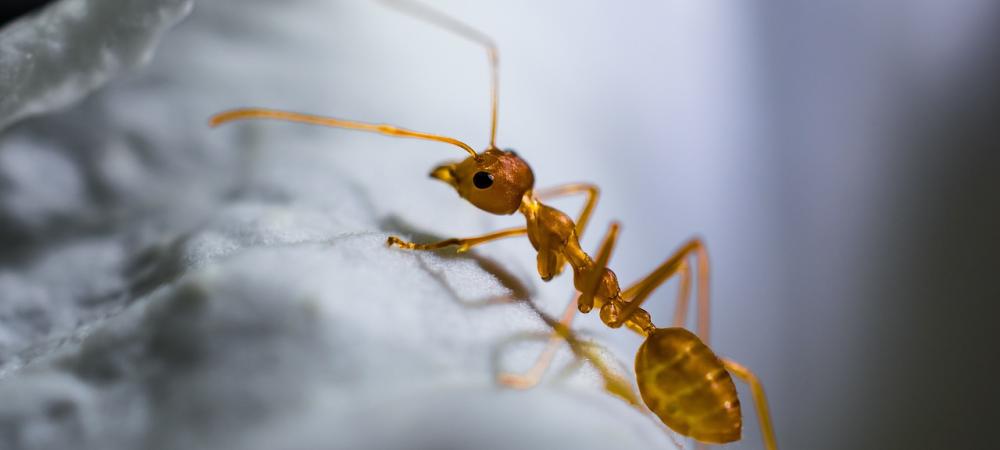
Living in Savannah, Georgia, means being surrounded by a rich natural environment, but it also comes with its share of challenges when it comes to pest management. Two common insects that might cause concern for homeowners are ants and termites. Both share similarities in appearance, but telling them apart is crucial for effective pest control. In this blog, we will explore distinctive features and signs that can help you tell the difference between ants and termites in Savannah.
Jump to a section about the differences between termites vs ants:
Ants vs. Termites: Physical Characteristics
Differentiating between ants and termites is a common challenge for Savannah homeowners. Despite their similar appearances, these insects have distinct physical characteristics. In this section, we'll explore these features, providing a guide to help you identify whether you're dealing with ants or termites around your home.
What Do Ants Look Like?
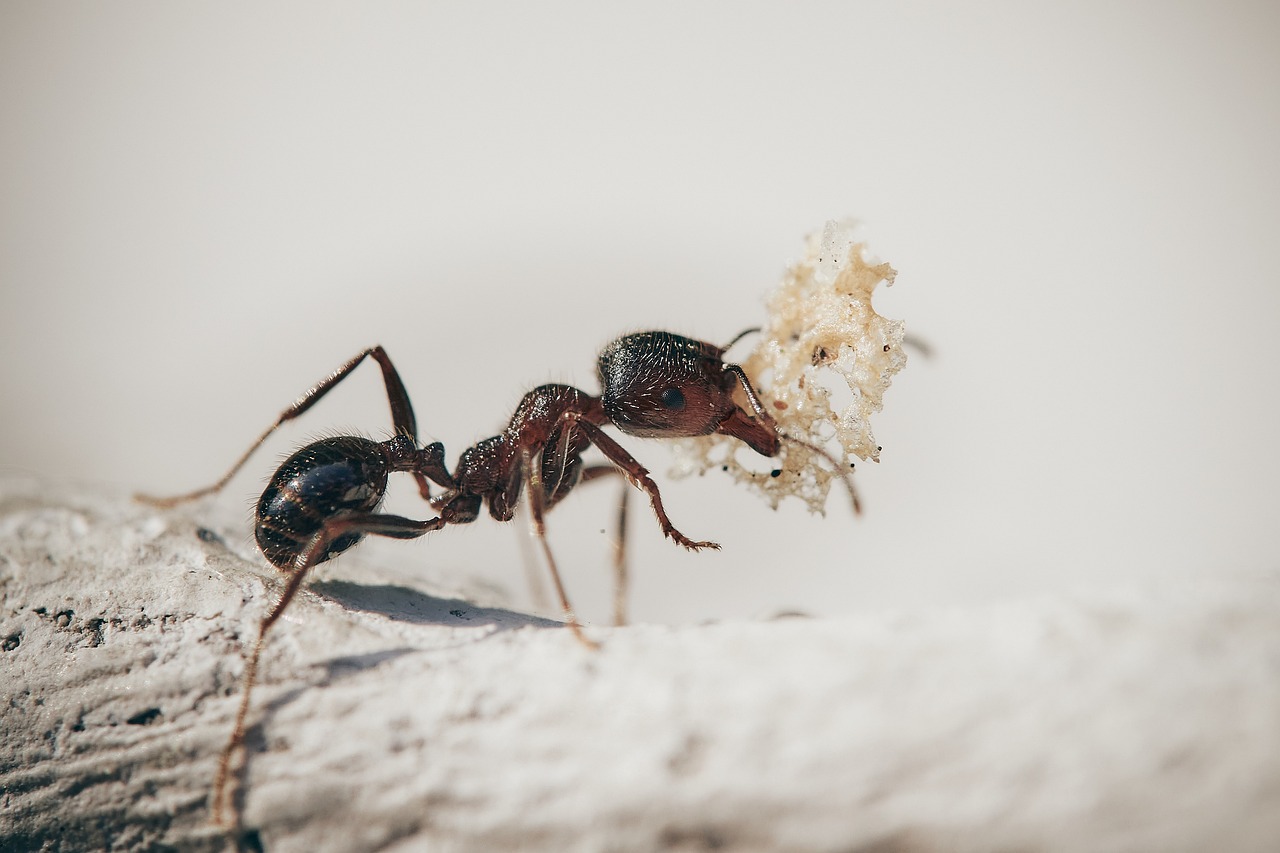
Ants typically have a well-defined segmentation of their body into three parts: head, thorax, and abdomen. They are known for their narrow waist or petiole between the thorax and abdomen. Ants vary greatly in size, with some species being just a few millimeters long, while others can reach several centimeters.
Ants have elbowed antennae that are distinctly bent or angled. The antennae play a crucial role in communication and sensing the environment.
What Do Termites Look Like?
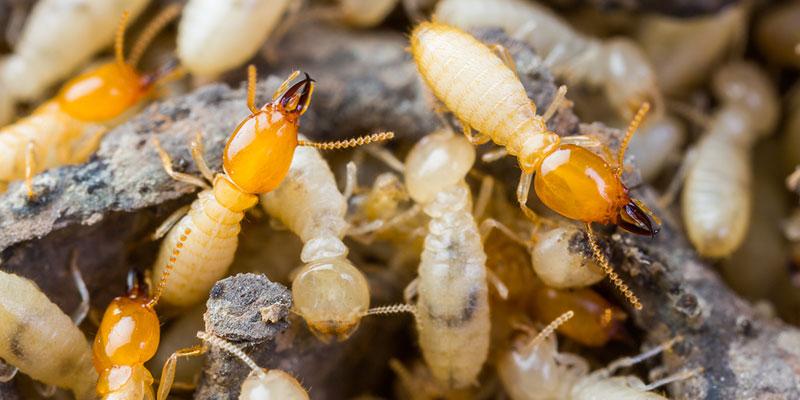
Termites, on the other hand, have a more uniform body structure with a head, thorax, and abdomen, lacking the distinct waist found in ants, instead featuring a straight waist. They often have a pale, soft body and can be similar in size to ants, but their appearance is generally more fragile.
Termites have straight antennae without any bends. While not as pronounced as ant antennae, termite antennae are essential for navigation and communication within their colonies.
Ants vs. Termites: Wings and Flying Behavior
For homeowners in Savannah, recognizing pests like ants and termites is vital. One key aspect that aids in their identification is their wings and flying behavior. While both insects may take to the air during certain stages, subtle differences exist. In this section, we'll explore the nuances of wings and flying behavior in ants and termites, offering insights to help you distinguish between the two.
Do Ants Have Wings?
Ants may have wings, but their front wings are longer than their hind wings. Some ant species have wingless individuals. Flying ants are typically seen during the mating season, and they shed their wings after mating.
Do Termites Have Wings?
Termites also have wings, but both sets of wings are of equal length. Flying termites, also known as termite swarmers, are common during the reproductive phase. Unlike ants, termites keep their wings even after mating.
Ants vs. Termites: Social Structure
Identifying pests in Savannah, such as ants and termites, involves understanding their social structures. Both insects are social insects and live in colonies, but their organization and roles within the community vary. In this section, we'll explore the key differences in the social structures of ants and termites to aid homeowners in accurate identification.
Ant Colonies
Ants are renowned for their highly organized and complex social structures. They live in colonies with a hierarchical system that includes a queen, worker ants, and male ants. The queen's primary role is to lay eggs, while worker ants perform various tasks such as foraging, caring for the young, and defending the colony. Some ants even have specialized castes for specific roles.
Termite Colonies
Termites also live in colonies and have a division of labor. Their colonies consist of a king and queen, worker termites, and soldier termites. The king and queen are responsible for reproduction, while workers gather food and take care of the nest. Soldiers, equipped with powerful mandibles or jaws, defend the colony from predators.
Ants vs. Termites: Feeding Habits
In the world of pest identification in Savannah, understanding the feeding habits of ants and termites is key. Despite their apparent similarities, these insects exhibit distinct dietary preferences. In this section, we'll unravel the nuances of the feeding habits of ants and termites, providing insights to help homeowners distinguish between these two common pests.
What Do Ants Eat?
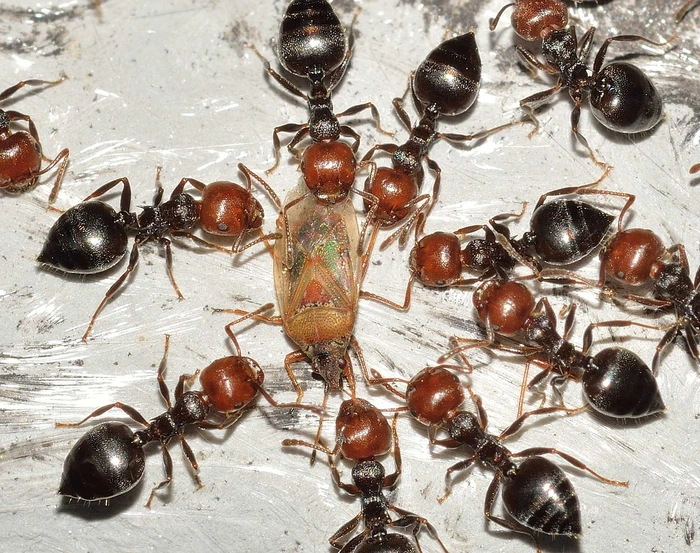
Ants are omnivorous, meaning they consume a variety of foods, including nectar, seeds, other insects, and even sugary substances. Some ant species engage in farming by cultivating fungi on collected plant material.
What Do Termites Eat?
Termites are primarily herbivorous, with a diet consisting mainly of cellulose from wood and plant material. They play a crucial role in ecosystems by breaking down tough plant fibers, aiding in the decomposition process.
Ants vs. Termites: Nest Construction
In Savannah's pest landscape, distinguishing between ants and termites involves understanding their nest construction methods. This section highlights the unique approaches each insect takes in building its colony, providing insights for homeowners to identify these pests accurately.
Where Do Ants Nests?
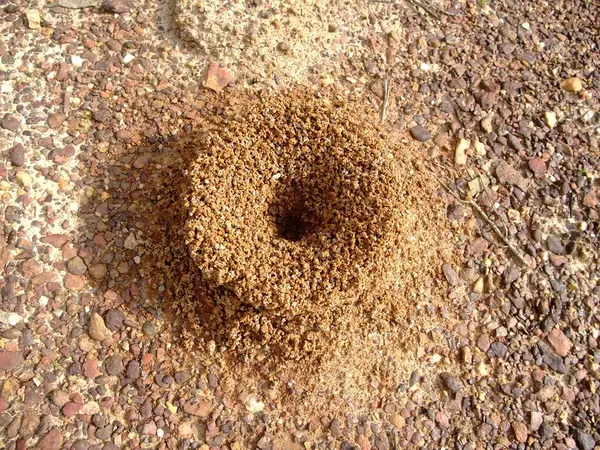
Ant nests can be found in various locations, including underground, in tree branches, or even within the wood of structures. Different ant species exhibit diverse nesting behaviors, such as building intricate tunnel systems or mounds.
Where Do Termites Nest?
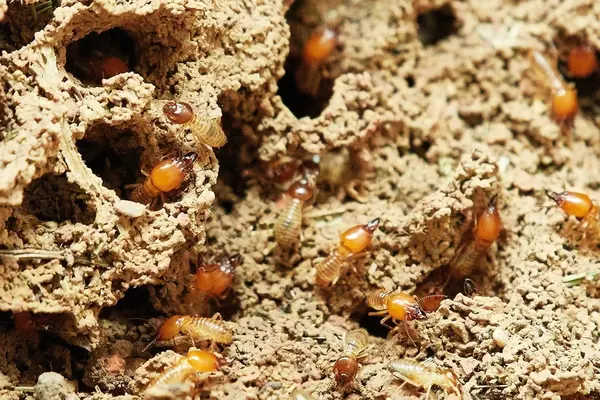
Termites construct elaborate nests made from a combination of soil, saliva, and feces. These nests can vary in size and shape, with some being underground and others built above ground. Subterranean termites often create mud tubes for protection and moisture retention.
Ants vs. Termites: Common Species
In Savannah, Georgia, a variety of ant and termite species can be encountered due to the region's diverse ecosystems and warm climate. Identifying the specific types of ants and termites is crucial for effective pest management. Below, we'll explore some common ant and termite species found in Savannah:
Common Types of Ants in Savannah
The most common ant species include:
- Argentine Ants (Linepithema humile)
- Characteristics: Small, light to dark brown in color, and they form large colonies.
- Behavior: Argentine ants are known for forming supercolonies, which can extend over vast areas. - Odorous House Ants (Tapinoma sessile)
- Characteristics: Dark brown to black, emit a distinctive, unpleasant odor when crushed.
- Behavior: Often found foraging in kitchen and food storage areas. - Red Imported Fire Ants (Solenopsis invicta)
- Characteristics: Reddish-brown in color, aggressive, and known for painful stings.
- Behavior: Build large mound nests and can be aggressive when disturbed. - Carpenter Ants (Camponotus spp.)
- Characteristics: Vary in size and color, often black, red, or a combination.
- Behavior: Nest in wood and can cause structural damage; they do not eat the wood but excavate it to build nests. - Ghost Ants (Tapinoma melanocephalum)
- Characteristics: Very small, pale-colored ants with a dark head and thorax.
- Behavior: Often found indoors, particularly in kitchens and bathrooms.
Common Types of Termites in Savannah
The most common species of termites include:
- Eastern Subterranean Termites (Reticulitermes flavipes)
- Characteristics: Creamy white to dark brown, worker termites are about 1/8 inch long.
- Behavior: Build mud tubes for protection, often found in soil and moist wood. - Formosan Subterranean Termites (Coptotermes formosanus)
- Characteristics: Similar to Eastern Subterranean Termites but with a more aggressive behavior.
- Behavior: Capable of causing extensive structural damage, often referred to as "super termites." - Drywood Termites (Incisitermes spp.)
- Characteristics: Light to dark brown, smaller than subterranean termites.
- Behavior: Infest dry wood, including furniture and structural timbers; do not require contact with soil. - Dampwood Termites (Zootermopsis spp.)
- Characteristics: Larger in size and often have a reddish-brown color.
- Behavior: Prefer damp or decaying wood, commonly found in humid environments. - Conehead Termites (Nasutitermes spp.)
- Characteristics: Distinctive cone-shaped heads on soldier termites.
- Behavior: Known for building above-ground nests, they are not as common as other termite species.
Ants vs. Termites: Damage Assessment
Understanding the potential wood damage caused by ants and termites is crucial for homeowners in Savannah. While ants and termites exhibit different feeding habits, both can impact the structural integrity of buildings.
What Does Ant Damage Look Like?
Ants do not feed on wood, and their presence is not directly associated with structural damage. However, some ant species may nest in wood, leading to minor cosmetic issues. Carpenter ants, for example, can excavate galleries in damp or damaged wood, causing aesthetic concerns. It's essential to address ant infestations promptly to prevent further nesting and potential structural compromises.
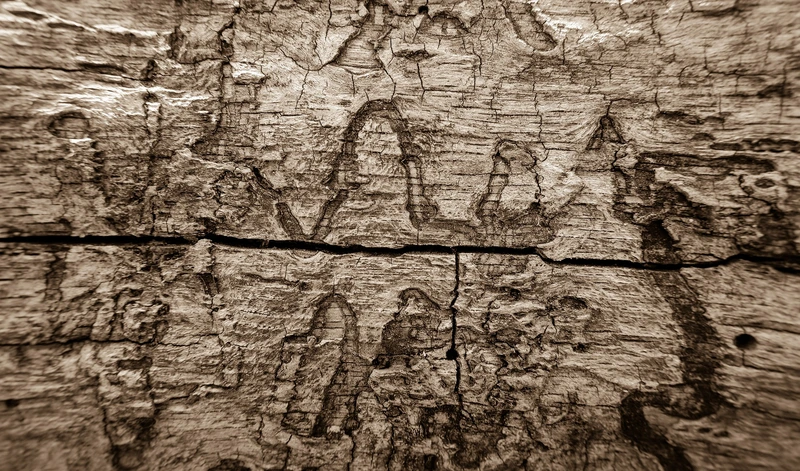
What Does Termite Damage Look Like?
Termites, particularly subterranean and drywood termites, pose a significant threat to the structural components of homes. These insects feed on wood and cellulose-containing materials, causing extensive damage over time. Signs of termite damage include hollow-sounding wood, sagging floors, visible tunnels or galleries in wooden structures, and the presence of mud tubes along the foundation. The destructive nature of termites makes early detection and intervention crucial for preventing severe structural issues.
Ants vs. Termites: Prevention and Control
For Savannah homeowners, preventing and controlling pests like ants and termites is a priority. Both insects can pose challenges, but effective strategies can mitigate risks. In this section, we'll explore preventative measures and control techniques tailored to each pest, empowering homeowners to safeguard their homes from ant and termite infestations.
How to Prevent Ants
To prevent ant infestations and minimize potential nesting in wooden structures, homeowners can take the following measures:
- Seal entry points: Identify and seal any cracks or openings in windows, doors, and foundations to prevent ant access.
- Maintain cleanliness: Keep food storage areas clean, and promptly clean up spills and crumbs to eliminate food sources.
- Trim vegetation: Trim branches and foliage that may provide a pathway for ants to access your home.
How to Prevent Termites
Preventing termite damage involves a combination of proactive measures and professional assistance:
- Regular inspections: Schedule regular termite inspections, especially in regions prone to termite activity.
- Moisture control: Address and fix any water leaks or moisture issues, as termites are attracted to damp environments.
- Remove wood-to-soil contact: Ensure that wooden structures, such as decks or fences, do not directly contact the soil to reduce the risk of termite infestation.
- Professional treatment: Consider professional termite treatments, such as soil-applied termiticides or bait systems, for long-term protection.
Seeking Professional Help From Pest Control Professionals
Whether you find ants crawling in your kitchen or termite wings on a window sill in your Savannah home, it is advisable to seek professional pest control services. Pest control experts can conduct thorough inspections, identify the pest species, assess the extent of damage, and recommend appropriate treatment strategies. Early intervention is key to minimizing damage to homes and preserving the integrity of your home.
If you are looking for the best local pest exterminators in Savannah, look no further than Bee Green Pest Control. With our comprehensive pest treatments and targeted termite control, we can help you protect your home from destructive pests for good! Contact our team today.
